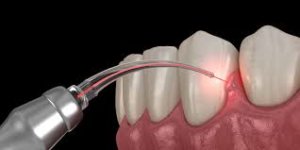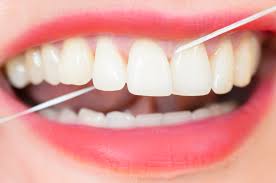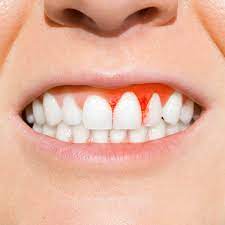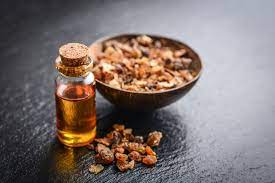Gum Disease: Prevention, Treatment & Oral Health Tips
Gum disease, also known as periodontal disease, is a bacterial infection that affects the gums and the bone that supports the teeth. It is caused by plaque, a sticky film of bacteria that forms on the teeth and gums. The early stage of gum disease is called gingivitis, which is characterized by red, swollen, and bleeding gums. If left untreated, gingivitis can progress to periodontitis, a more advanced stage of gum disease where the gums pull away from the teeth, forming pockets that can become infected. Over time, periodontitis can lead to tooth loss. We will discuss the following topics:
Overview of the gum
Functions of the gum
Causes of gum diseases
Types of gum diseases
Prevention of gum diseases
Symptoms of gum diseases
Complications of gum diseases
Management of gum diseases
Natural management of gum diseases
Herbal remedies to manage gum diseases
When to seek urgent medical care

Overview of the gum
The gums, also known as gingiva, are soft tissue that covers the jawbone and surrounds the base of the teeth. They serve as a protective barrier for the roots of the teeth and help anchor them in place.
The gums are made up of two main layers: the outer layer, called the oral epithelium, and the inner layer, called the connective tissue. The oral epithelium is the thin, pink layer that is visible when you look in your mouth. The connective tissue is a thicker layer of tissue that provides support to the oral epithelium and helps attach the gums to the teeth and jawbone.
Healthy gums should be pink and firm and should fit snugly around the teeth. Signs of gum disease include redness, swelling, bleeding, and recession of the gums, where the gums pull away from the teeth.
Functions of the gum
The gums, also known as gingiva, serve several important functions in the mouth, including:
Protection: The gums protect the roots of the teeth and the bone that surrounds them from damage and infection.
Anchoring the teeth: The gums help anchor the teeth in place and keep them from shifting or moving around in the mouth.
Sensation: The gums are highly sensitive to touch and pressure, which helps with chewing and speaking.
Nutrition: The gums contain blood vessels that supply nutrients to the teeth and surrounding tissues.
Immune defense: The gums contain immune cells that help fight off bacteria and other harmful microorganisms that can cause infection and inflammation.
Aesthetics: Healthy gums provide a clean, even appearance to the teeth and can enhance the overall appearance of the smile.
Causes of gum diseases
Gum disease, also known as periodontal disease, is caused by a buildup of bacteria and plaque on the teeth and gums. Plaque is a sticky film of bacteria that forms on the teeth and can cause inflammation and infection in the gums. The main causes of gum disease include:
Poor oral hygiene: Failure to brush and floss regularly can lead to the buildup of plaque and bacteria in the mouth, which can cause gum disease.
Smoking: Tobacco use can weaken the immune system and make it harder for the body to fight off infections, including gum disease.
Genetics: Some people may be more genetically susceptible to gum disease.
Hormonal changes: Hormonal changes during puberty, pregnancy, and menopause can make the gums more sensitive and prone to inflammation.
Medical conditions: Certain medical conditions, such as diabetes, HIV, and cancer, can increase the risk of gum disease.
Medications: Certain medications, such as antihistamines and antidepressants, can cause dry mouth, which can increase the risk of gum disease.
Age: Older adults are more prone to gum disease due to the natural aging process.
Poor nutrition: A diet high in sugar and carbohydrates, lacking in essential nutrients, particularly vitamin C, can promote the growth of harmful bacteria in the mouth and weaken the immune system and increase the risk of gum disease.
Stress: Stress can weaken the immune system and make it harder for the body to fight off infections.
Grinding or clenching teeth: Grinding or clenching teeth can put pressure on the gums and increase the risk of gum disease.
Types of gum diseases
Gingivitis: Gingivitis is the early stage of gum disease and is caused by the buildup of plaque on the teeth and gums. Symptoms include red, swollen, and bleeding gums, as well as bad breath. Gingivitis is reversible with proper oral hygiene and professional dental care.
Periodontitis: Periodontitis is a more advanced stage of gum disease and occurs when gingivitis is left untreated. In periodontitis, the gums pull away from the teeth, forming pockets that can become infected. Over time, the infection can spread to the bone and other supporting structures of the teeth, leading to tooth loss. Symptoms include receding gums, loose teeth, and changes in bite. Treatment for periodontitis may include professional cleaning, antibiotics, and surgery in severe cases.
There are also several types of periodontitis, including:
Aggressive periodontitis: This type of periodontitis occurs in otherwise healthy individuals and progresses rapidly.
Chronic periodontitis: This is the most common type of periodontitis and progresses slowly over time.
Necrotizing periodontitis: This rare type of periodontitis is characterized by the death of gum tissue and can be caused by a bacterial infection, malnutrition, or other factors.
Periodontitis caused by systemic disease: Certain systemic diseases, such as diabetes and HIV, can increase the risk of gum disease and make it harder to treat.
Prevention of gum diseases

Preventing gum disease involves a combination of good oral hygiene practices and regular dental checkups. Here are some tips for preventing gum disease:
Brush twice a day: Brush your teeth for two minutes, twice a day with a fluoride toothpaste. Use a soft-bristled toothbrush and brush in circular motions.
Floss daily: Flossing removes plaque and bacteria from between the teeth and along the gumline. Be gentle when flossing and avoid snapping the floss against the gums.
Use an antiseptic mouthwash: An antiseptic mouthwash can help kill bacteria and freshen breath.
Eat a healthy diet: A diet rich in fruits, vegetables, and whole grains can help keep the mouth and gums healthy.
Avoid tobacco: Tobacco use can weaken the immune system and increase the risk of gum disease.
Manage stress: Stress can weaken the immune system and make it harder for the body to fight off infections.
See a dentist regularly: Regular dental checkups can help detect gum disease early and prevent it from progressing.
Symptoms of gum diseases

The symptoms of gum disease can vary depending on the severity of the condition. Here are some common symptoms of gum disease:
Red, swollen, or tender gums
Bleeding gums, especially when brushing or flossing
Receding gums, causing the teeth to appear longer
Persistent bad breath or bad taste in the mouth
Loose or shifting teeth
Changes in the way teeth fit together when biting or chewing
Pus between the teeth and gums
A change in the color of the gums from a healthy pink to red or purplish-red
Painful chewing
Complications of gum diseases
If left untreated, gum disease can lead to several complications, including:
Tooth loss: Gum disease is a leading cause of tooth loss in adults.
Abscesses: In some cases, gum disease can lead to the formation of pus-filled abscesses in the gums or teeth.
Receding gums: As gum disease progresses, the gums can recede, exposing more of the tooth’s root and making it more susceptible to decay.
Bone loss: Gum disease can cause the bones that support the teeth to break down, leading to tooth loss.
Infections: Gum disease can increase the risk of infections in other parts of the body, such as the heart, lungs, and brain.
Diabetes: Gum disease can make it harder for people with diabetes to control their blood sugar levels.
Pregnancy complications: Pregnant women with gum disease are at an increased risk of premature birth and low birth weight.
Oral cancer: Some studies have found a link between gum disease and an increased risk of oral cancer.
Bleeding gums
Bleeding gums can be a sign of gum disease, which is caused by a buildup of plaque and bacteria on the teeth and gums. When the gums become inflamed due to this buildup, they can become sensitive and more likely to bleed when brushed or flossed. Other potential causes of bleeding gums include:
Brushing too hard: Brushing too hard or using a toothbrush with hard bristles can irritate the gums and cause them to bleed.
Vitamin deficiency: A lack of vitamin C or vitamin K can lead to bleeding gums.
Hormonal changes: Hormonal changes during pregnancy or menopause can make the gums more sensitive and prone to bleeding.
Medications: Certain medications, such as blood thinners or antiplatelet drugs, can increase the risk of bleeding gums.
Medical conditions: Some medical conditions, such as leukemia or diabetes, can cause bleeding gums.
If you are experiencing bleeding gums, it’s important to talk to your dentist. They can help determine the underlying cause and recommend appropriate treatment. In the meantime, you can try to improve your oral hygiene by brushing twice a day with a soft-bristled toothbrush, flossing daily, and using an antiseptic mouthwash. You may also want to consider using a toothpaste that is specifically designed to help reduce gum inflammation and bleeding.
Health conditions associated with gum disease
Cardiovascular disease: Research suggests that the bacteria from gum disease can enter the bloodstream and contribute to the development of heart disease, stroke, and other cardiovascular problems.
Diabetes: Diabetes and gum disease are closely linked. People with diabetes are more susceptible to gum disease, and gum disease can make it more difficult to control blood sugar levels in people with diabetes. Gum disease can also make it harder for people with diabetes to control their blood sugar levels, as the infection and inflammation from gum disease can increase insulin resistance and make it more difficult for insulin to work properly.
Respiratory infections: The bacteria from gum disease can also be inhaled into the lungs, potentially causing infections like pneumonia.
Pregnancy complications: During pregnancy, hormonal changes can cause the gums to become more sensitive and inflamed, making them more susceptible to bacterial infections and more likely to experience premature birth, low birth weight, and other pregnancy complications.
Alzheimer’s disease: Some research has suggested a link between chronic gum disease and an increased risk of developing Alzheimer’s disease.
Rheumatoid arthritis: People with gum disease may be more likely to develop rheumatoid arthritis, an autoimmune disorder that causes joint pain and swelling.
Kidney disease: Chronic gum disease may contribute to the development and progression of kidney disease.
It is important to note that the links between gum disease and these health conditions are still being studied, and more research is needed to fully understand the connections. However, maintaining good oral hygiene and seeing a dentist regularly can help to prevent and manage gum disease and potentially reduce the risk of associated health problems.
Gum Examination
A gum examination, also known as a periodontal exam, is a routine dental checkup that involves evaluating the health of your gums and teeth and it is recommended that you have a periodontal exam at least once a year, or more frequently if you have any signs or symptoms of gum disease. During the examination, a dentist or dental hygienist will use special tools to assess the health of your gums, including measuring the pockets around your teeth, checking for bleeding or swelling, and assessing the color and texture of your gum tissue.
The examination typically begins with a visual inspection of your gums and teeth, looking for signs of inflammation or other issues such as discoloration or receding gum lines. The dentist or hygienist will then use a small probe to measure the depth of the pockets between your gums and teeth. Pockets deeper than 3 millimeters may indicate gum disease and require further attention.
The dental professional will also check for bleeding, which can indicate inflammation or infection, and examine the texture and color of your gum tissue. If there are any signs of gum disease, such as redness, swelling, or bleeding, the dentist may recommend further treatment, such as a deep cleaning or other periodontal therapy.
Is gum disease reversible?
The early stages of gum disease, also known as gingivitis, are generally reversible with proper treatment and good oral hygiene practices. Gingivitis is characterized by inflammation of the gums, which can cause redness, swelling, and bleeding.
Good oral hygiene practices, such as brushing twice a day, flossing daily, and using an antiseptic mouthwash, can help to prevent and reverse gingivitis. Regular dental cleanings can also help to remove plaque and tartar buildup, which can contribute to gum disease.
However, if gum disease is left untreated and allowed to progress, it can lead to more severe forms of periodontal disease, which may not be reversible. In advanced stages of periodontal disease, the bone and tissue that support the teeth can be damaged, leading to tooth loss.
Dos and donts

Here are some general dos and don’ts for maintaining good oral health:
DOs:
Brush your teeth twice a day, for two minutes each time, with fluoride toothpaste and a soft-bristled brush.
Floss daily to remove plaque and food particles from between your teeth and along the gum line.
Use mouthwash to help kill bacteria that cause bad breath and gum disease.
Eat a balanced diet that is rich in fruits, vegetables, and whole grains, and limit sugary foods and drinks.
Visit your dentist regularly for check-ups and cleanings to prevent and detect oral health issues early.
DON’Ts:
Don’t brush your teeth too hard or use a toothbrush with hard bristles, as this can damage your teeth and gums.
Don’t use tobacco products, as they can increase the risk of gum disease and oral cancer.
Don’t chew on hard objects, such as ice, hard candy, or pencils, as this can damage your teeth.
Don’t use your teeth as tools to open packages or bottles, as this can also damage your teeth.
Don’t ignore any signs or symptoms of oral health problems, such as bleeding gums, persistent bad breath, or tooth pain.
By following these dos and don’ts, you can help maintain good oral health and prevent oral health issues.
Management of gum diseases

The management of gum disease depends on the severity of the condition. Here are some common management strategies:
Professional dental cleaning: Professional dental cleaning is the first step in treating gum disease. During a dental cleaning, a dentist or dental hygienist will remove plaque and tartar from the teeth and gums.
Scaling and root planing: If the gum disease has progressed, a dentist may recommend a deep cleaning procedure called scaling and root planing. This procedure involves removing plaque and tartar from below the gum line and smoothing out the root surfaces to help the gums reattach to the teeth.
Medications: In some cases, a dentist may prescribe antibiotics to help control the infection or prescribe antimicrobial mouthwash to reduce bacteria in the mouth.
Surgery: If the gum disease is severe and has caused significant damage to the gums and bone, surgery may be necessary to repair the damage. Gum surgery can include procedures such as gum grafting, flap surgery, and bone grafting.
Lifestyle changes: Making lifestyle changes such as quitting smoking, maintaining a healthy diet, and managing stress can also help manage gum disease.
Natural management of gum diseases
While professional dental care is the most effective way to manage gum disease, there are some natural remedies that may help support oral health and complement traditional treatments. Here are a few examples:
Saltwater rinses: Rinsing the mouth with warm saltwater several times a day may help reduce inflammation and promote healing of the gums.
Vitamin C: Vitamin C is an antioxidant that can help reduce inflammation and support gum health. Eating foods high in vitamin C, such as citrus fruits, kiwi, strawberries, and broccoli, can help support oral health.
Toothpaste: Toothpaste is a gel or paste that is used in conjunction with a toothbrush to clean and maintain the teeth and gums. Toothpaste typically contains a combination of ingredients that help to remove plaque and bacteria from the teeth, freshen breath, and promote oral health.
Here are some common ingredients found in toothpaste:
Fluoride: Fluoride is a mineral that helps to strengthen tooth enamel and prevent tooth decay.
Abrasives: Abrasives are small particles that help to scrub away plaque and surface stains from the teeth.
Humectants: Humectants are ingredients that help to keep the toothpaste from drying out and hardening.
Flavoring agents: Flavoring agents are added to toothpaste to give it a pleasant taste and freshen breath.
Detergents: Detergents are added to toothpaste to help loosen and remove debris from the teeth.
Anti-plaque and anti-gingivitis agents: Some toothpastes may contain additional ingredients, such as triclosan or zinc, that help to reduce plaque buildup and prevent gingivitis.
It is important to choose a toothpaste that is appropriate for your individual oral health needs. For example, if you have sensitive teeth, you may want to choose a toothpaste that is specifically formulated for sensitive teeth. Similarly, if you have gum disease, you may want to choose a toothpaste that is designed to help reduce plaque and inflammation. It’s also important to brush your teeth at least twice a day with a fluoride toothpaste and to floss daily to maintain good oral health.
Hydrogen peroxide: Hydrogen peroxide is a chemical compound with the formula H2O2. It is a pale blue liquid that is used for a variety of purposes, including as a disinfectant, bleaching agent, and antiseptic. In the context of oral health, hydrogen peroxide is sometimes used as a mouthwash to help whiten teeth and kill bacteria in the mouth. However, it’s important to note that using hydrogen peroxide as a mouthwash can have potential risks and side effects. Using a high concentration of hydrogen peroxide or using it too frequently can cause irritation, burning, and damage to the soft tissues in the mouth. It can also cause temporary tooth sensitivity and irritation of the gums.
If you are considering using hydrogen peroxide as a mouthwash, it’s important to talk to your dentist first to determine if it’s safe for you to use and to get instructions on how to use it properly. In general, it’s recommended to use a low concentration of hydrogen peroxide (such as a 1% solution) and to use it in moderation to avoid potential side effects. It’s also important to continue practicing good oral hygiene habits, such as brushing and flossing regularly, to maintain healthy teeth and gums.
Chamomile:  Chamomile has anti-inflammatory and antimicrobial properties that can help reduce inflammation and kill bacteria in the mouth. It can be used as a tea or as a mouthwash.
Chamomile has anti-inflammatory and antimicrobial properties that can help reduce inflammation and kill bacteria in the mouth. It can be used as a tea or as a mouthwash.
Sage:  Sage has antibacterial and anti-inflammatory properties that can help reduce inflammation and kill bacteria in the mouth. It can be used as a tea, mouthwash, or as a topical treatment.
Sage has antibacterial and anti-inflammatory properties that can help reduce inflammation and kill bacteria in the mouth. It can be used as a tea, mouthwash, or as a topical treatment.
Peppermint:  Peppermint has antiseptic properties that can help kill bacteria in the mouth and reduce inflammation. It can be used as a tea or as a mouthwash.
Peppermint has antiseptic properties that can help kill bacteria in the mouth and reduce inflammation. It can be used as a tea or as a mouthwash.
Aloe vera:  Aloe vera has anti-inflammatory properties that can help reduce inflammation and promote healing of the gums. It can be used as a topical treatment or as a mouthwash.
Aloe vera has anti-inflammatory properties that can help reduce inflammation and promote healing of the gums. It can be used as a topical treatment or as a mouthwash.
Myrrh:  Myrrh has astringent properties that can help tighten and strengthen the gums. It can be used as a mouthwash or as a topical treatment.
Myrrh has astringent properties that can help tighten and strengthen the gums. It can be used as a mouthwash or as a topical treatment.
Green tea:  Green tea contains catechins, which are antioxidants that have been shown to help reduce inflammation in the gums and prevent the growth of bacteria that can lead to gum disease. Drinking green tea regularly may help to promote healthy gums.
Green tea contains catechins, which are antioxidants that have been shown to help reduce inflammation in the gums and prevent the growth of bacteria that can lead to gum disease. Drinking green tea regularly may help to promote healthy gums.
Baking soda:  has natural abrasive properties that can help to remove plaque and surface stains from the teeth. It may also help to neutralize acids in the mouth and reduce the growth of bacteria. Some people use a baking soda paste as a natural toothpaste to help manage gum disease.
has natural abrasive properties that can help to remove plaque and surface stains from the teeth. It may also help to neutralize acids in the mouth and reduce the growth of bacteria. Some people use a baking soda paste as a natural toothpaste to help manage gum disease.
Oil pulling:  This involves swishing a tablespoon of oil (such as coconut oil) in the mouth for several minutes before spitting it out. Some people believe that oil pulling can help reduce bacteria in the mouth and promote healthier gums.
This involves swishing a tablespoon of oil (such as coconut oil) in the mouth for several minutes before spitting it out. Some people believe that oil pulling can help reduce bacteria in the mouth and promote healthier gums.
Sesame oil:  has been used for centuries in Ayurvedic medicine to help promote oral health. It contains antioxidants and anti-inflammatory compounds that may help to reduce inflammation in the gums and prevent the growth of bacteria.
has been used for centuries in Ayurvedic medicine to help promote oral health. It contains antioxidants and anti-inflammatory compounds that may help to reduce inflammation in the gums and prevent the growth of bacteria.
Coconut oil:  has antimicrobial properties that may help to reduce the growth of bacteria in the mouth. Some people use coconut oil as a natural mouthwash or as part of their oil pulling routine to help manage gum disease.
has antimicrobial properties that may help to reduce the growth of bacteria in the mouth. Some people use coconut oil as a natural mouthwash or as part of their oil pulling routine to help manage gum disease.
It’s important to note that while these substances may have potential benefits for managing gum disease, more research is needed to fully understand their effectiveness and safety. It’s also important to talk to your dentist before using any natural remedies to manage gum disease, as they may not be appropriate for everyone and could interact with other medications or treatments. It is important to note that while herbal remedies may help support gum health, they are not a substitute for professional dental care. If you have gum disease, it’s important to see a dentist and follow a treatment plan to prevent the disease from getting worse and causing complications.
When to seek urgent medical care
If you have gum disease, it’s important to see a dentist regularly and follow a treatment plan to manage the condition. However, there are certain situations where you may need to seek urgent medical care. Here are a few examples:
Severe pain: If you are experiencing severe pain in your gums or teeth, it could be a sign of a serious infection or abscess. You should seek urgent medical care to prevent the infection from spreading.
Bleeding gums: If your gums are bleeding excessively and the bleeding doesn’t stop after applying pressure, it could be a sign of a serious problem. Seek medical care immediately if this happens.
Swollen or tender gums: If your gums are swollen, tender, or red, it could be a sign of an infection or inflammation. Seek medical care if these symptoms persist or worsen.
Loose teeth: If your teeth feel loose or are shifting out of place, it could be a sign of advanced gum disease. Seek medical care immediately to prevent further damage to your teeth and gums.
Pus or discharge: If you notice pus or discharge coming from your gums, it could be a sign of a serious infection. Seek medical care immediately to prevent the infection from spreading.
If you are experiencing any of these symptoms, it’s important to seek medical care as soon as possible to prevent further damage to your teeth and gums.
Disclaimer: The information provided in this content is for general informational purposes only. It is not intended as medical or healthcare advice, diagnosis, or treatment. Always seek the advice of a qualified healthcare professional with any questions you may have regarding a medical condition or healthcare decisions.

